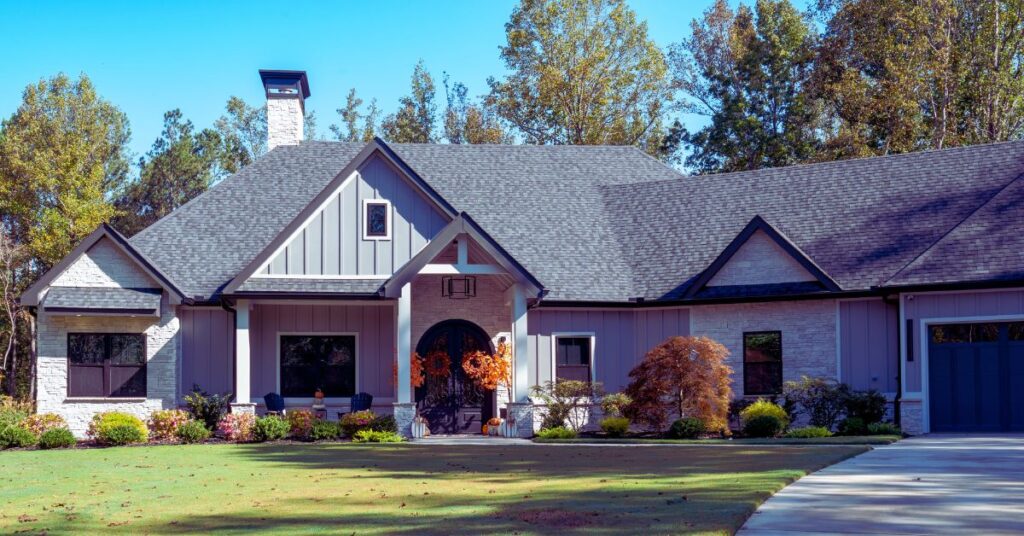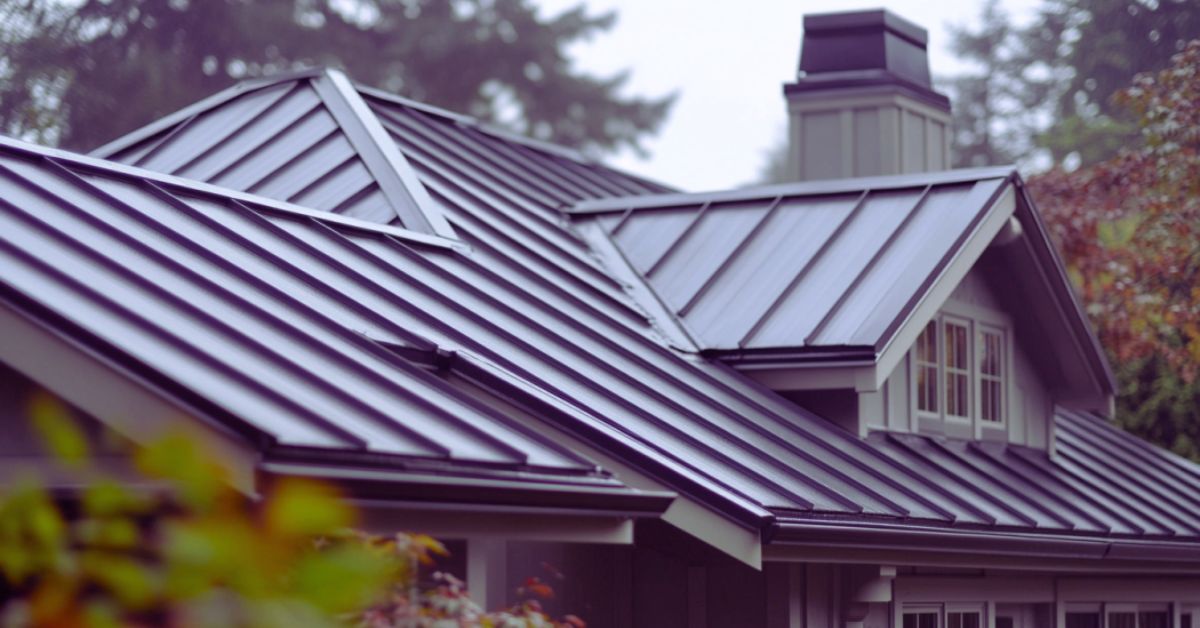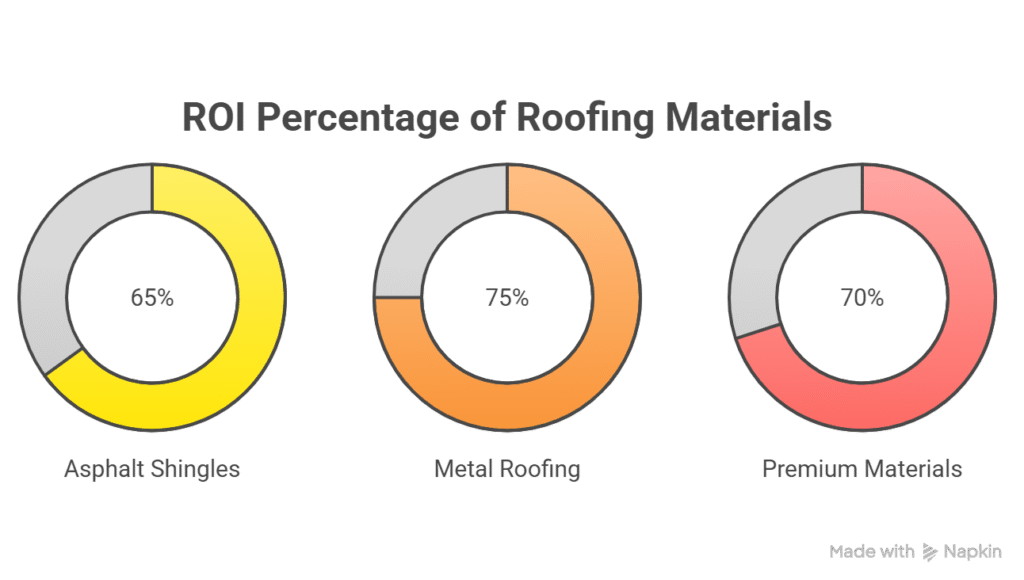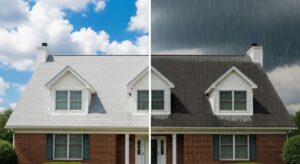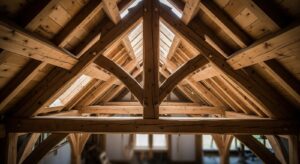Choosing the right roofing material for your home can feel overwhelming. With dozens of options, varying costs, and conflicting advice from contractors, how do you make the best decision for your family and budget?
You’re not alone in this confusion. Every year, millions of homeowners face the same dilemma when it’s time for a roof replacement. The material you choose will protect your family for decades, impact your home’s value, and affect your energy bills for years to come.
Here’s the truth: there’s no single “best” roofing material for every home. But there IS a perfect match for YOUR specific needs, climate, budget, and style preferences. This comprehensive guide will walk you through everything you need to know about residential roofing materials, helping you make an informed decision that you’ll be happy with for decades.
Why Your Choice of Residential Roofing Materials Matters More Than You Think
Your roof isn’t just a protective barrier – it’s a complex system that affects every aspect of your home’s performance. The residential roofing materials you select will influence:
- Energy efficiency: The right materials can slash your cooling and heating costs
- Home value: Quality roofing materials can increase your property value by 15-20%
- Maintenance costs: Some materials require minimal upkeep, while others need regular attention
- Weather resistance: Your local climate demands specific material properties
- Aesthetic appeal: Your roof covers 40% of your home’s visible exterior
Let’s dive into the world of good residential roofing materials and explore your options.
Most Popular Roofing Materials for Residential Homes
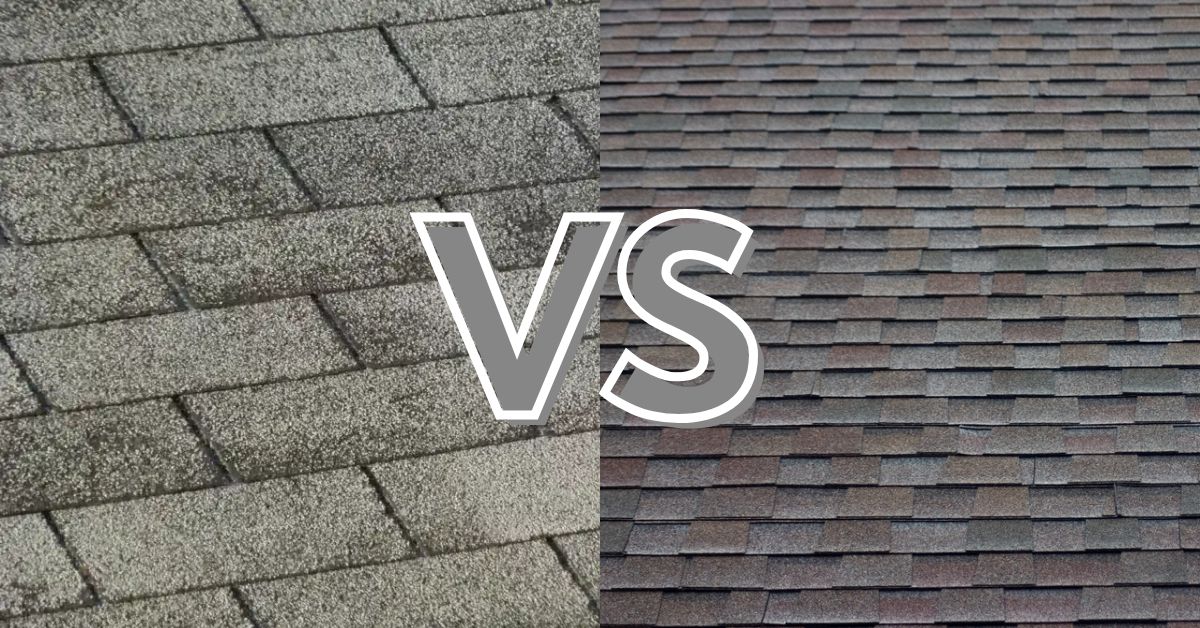
Asphalt Shingles: America’s Most Common Roof Material
Asphalt shingles dominate the residential roofing market for good reason. As the most common roof material in North America, they offer an excellent balance of affordability, durability, and aesthetic versatility.
Shingle Type | Cost per Square | Lifespan | Best For |
Traditional 3-Tab | $90-$150 | 15-20 years | Budget-conscious homeowners, starter homes |
Architectural (Dimensional) | $150-$300 | 25-30 years | Enhanced curb appeal, better wind resistance |
Laminated Composite Shingles Laminated composite shingle roofing represents the premium tier of asphalt shingles. These new residential roofing materials combine multiple layers for superior durability and dimensional appearance. They’re engineered to withstand extreme weather while providing the classic look homeowners love.
Understanding how thick is a roof shingle becomes crucial when comparing different asphalt options. Standard 3-tab shingles measure about 1/8 inch thick, while premium architectural shingles can be up to 1/2 inch thick, providing better protection and longevity.
Metal Roofing: The Rising Star of Residential Roofing Systems
Metal roofing has exploded in popularity, and for good reason. These modern roofing materials offer unmatched durability and energy efficiency.
Metal Type | Cost per Square | Lifespan | Key Benefits |
Steel Roofing | $400-$800 | 40-70 years | Standing seam, corrugated, metal shingles styles |
Aluminum Roofing | $500-$900 | 50+ years | Lightweight, corrosion-resistant, recyclable |
Copper Roofing | $800-$1,500 | 100+ years | Develops beautiful patina, premium appearance |
The benefits of metal roof vs shingles discussion often centers on longevity and energy efficiency. While metal costs more upfront, the long-term savings in energy bills and replacement costs often make it the more economical choice over time.
When comparing metal roof vs asphalt shingles, consider your local climate. Metal excels in areas with severe weather, while asphalt shingles perform well in moderate climates and offer more color options.
Premium Natural Materials
Slate Roofing Slate represents the pinnacle of roofing elegance and durability. These natural stone tiles can last over 100 years with proper maintenance. However, slate roof repair requires specialized expertise and can be costly.
- Cost: $800-$1,600 per square
- Lifespan: 75-150 years
- Best for: Historic homes, luxury properties
Clay and Concrete Tiles Popular in Mediterranean and Southwestern styles, tile roofing offers excellent longevity and fire resistance.
- Cost: $300-$800 per square
- Lifespan: 50-100 years
- Styles: Mission, French, flat profiles
Wood Shingles and Shakes Cedar and other wood roofing options for homes provide natural beauty but require more maintenance.
- Cost: $400-$700 per square
- Lifespan: 25-40 years
- Considerations: Fire resistance, maintenance requirements
Comparing Residential Roofing Materials: Making the Right Choice
Climate Considerations for Roofing Choices
Your local weather patterns should heavily influence your roofing materials comparison. Here’s how different materials perform in various climates:
Climate Type | Best Materials | Key Considerations |
Hot, Sunny Climates | Metal roofing, Light-colored materials, Clay tiles | Reflects heat, reduces cooling costs, handles desert conditions |
Cold, Snowy Regions | Asphalt shingles, Metal roofing | Handles freeze-thaw cycles, sheds snow effectively, proper insulation critical |
High-Wind Areas | Impact-rated materials | Wind-resistant fastening systems, proper installation techniques crucial |
Coastal Environments | Corrosion-resistant materials | Salt air affects selection, regular maintenance important |
Budget-Friendly vs. Premium Options
When comparing roofing materials, cost considerations extend beyond initial purchase price:
Material Category | Cost Range per Square | Lifespan | Examples |
Budget-Friendly | $90-$300 | 15-30 years | 3-tab asphalt shingles, Basic architectural shingles, Corrugated metal |
Mid-Range | $300-$600 | 25-50 years | Premium architectural shingles, Basic metal roofing systems, Concrete tiles |
Premium | $600-$1,500+ | 50-150+ years | Standing seam metal, Natural slate, Cedar shakes, Copper roofing |
Installation Methods and Considerations
Roofing Over Existing Shingles: Is It Right for You?
One cost-saving option many homeowners consider is roofing over existing shingles. This approach can reduce labor costs and disposal fees, but it’s not always the best choice.
When It Makes Sense:
- Existing roof has only one layer
- Current shingles lie flat
- No structural issues present
- Local codes permit overlay
When to Avoid:
- Multiple existing layers
- Damaged decking underneath
- Poor ventilation systems
- Warranty concerns
Essential Materials Needed for Roofing Projects
Understanding the materials needed for roofing helps you communicate effectively with contractors and budget accurately:
Primary Components:
- Roofing material (shingles, metal, tiles)
- Underlayment (felt, synthetic, or ice/water shield)
- Fasteners (nails, screws, clips)
- Flashing (step, valley, chimney)
Ventilation Elements:
- Ridge vents
- Soffit vents
- Exhaust fans
- Intake baffles
Finishing Materials:
- Drip edge
- Gutters and downspouts
- Trim and fascia boards
- Sealants and caulks
Specialized Roofing Applications
RV Roof Replacement: Unique Considerations
Mobile home and RV owners face unique challenges. An RV roof replacement kit must account for:
- Weight limitations
- Expansion and contraction
- Road vibration resistance
- Easy maintenance access
Popular RV Roofing Materials:
- EPDM rubber membranes
- TPO (thermoplastic polyolefin)
- Modified bitumen
- Aluminum coatings
Commercial vs. Residential Applications
While this guide focuses on residential applications, understanding the differences helps appreciate why certain residential roofing systems work better for homes:
Residential Priorities:
- Aesthetic appeal
- Long-term value
- Weather protection
- Energy efficiency
Commercial Focus:
- Cost per square foot
- Maintenance accessibility
- Warranty terms
- Fire ratings
Latest Innovations in Roofing Materials
Best New Roofing Materials on the Market
The roofing industry continues evolving, with manufacturers developing innovative best new roofing materials:
Innovation Category | Examples | Key Features |
Solar-Integrated Shingles | Tesla Solar Roof, GAF Timberline Solar, CertainTeed Apollo tiles | Energy generation, Seamless integration, Premium aesthetics |
Cool Roof Technologies | Reflective coatings, Light-colored materials, Specialized granules | Heat reflection, Energy savings, Temperature reduction |
Impact-Resistant Materials | Class 4 impact ratings, Hail-resistant designs | Insurance premium discounts, Storm protection, Enhanced durability |
Synthetic Materials | Polymer shingles, Composite tiles, Recycled content options | Environmental benefits, Consistent quality, Design flexibility |
Smart Roofing Technologies
Modern roof products increasingly incorporate technology:
- Moisture detection systems
- Temperature monitoring
- Integrated ventilation controls
- Weather alert systems
Making Your Final Decision: Roofing Materials List and Selection Guide
Step-by-Step Selection Process
- Assess Your Current Roof
- Age and condition
- Structural integrity
- Existing problems
- Define Your Priorities
- Budget constraints
- Aesthetic preferences
- Longevity goals
- Maintenance tolerance
- Research Local Requirements
- Building codes
- HOA restrictions
- Permit requirements
- Weather considerations
- Get Multiple Quotes
- Licensed contractors only
- Detailed material specifications
- Labor and warranty terms
- Timeline estimates
Red Flags to Avoid
When selecting roof replacement materials, watch for:
- Door-to-door sales tactics
- Unusually low bids
- Pressure for immediate decisions
- Requests for full payment upfront
- Unlicensed contractors
The Best Roof for Your House: Final Recommendations
After analyzing all factors, here are our top recommendations for the best roofing material by situation:
Best Choice Category | Recommended Material | Key Benefits |
Best Overall Value | Architectural asphalt shingles | Balanced cost and performance, Wide style selection, Proven track record |
Best Long-Term Investment | Standing seam metal | 50+ year lifespan, Energy savings, Low maintenance |
Best for Historic Homes | Natural slate or cedar | Authentic appearance, Superior longevity, Increased property value |
Best Budget Option | 3-tab asphalt shingles | Lowest upfront cost, Adequate performance, Easy replacement |
Best for Extreme Weather | Impact-rated materials | Superior storm resistance, Insurance benefits, Peace of mind |
Maintenance and Care for Different Roofing Materials
Annual Inspection Checklist
Regardless of your chosen residential roofing products, annual inspections should include:
Inspection Type | What to Check | Frequency/Timing |
Visual Exterior Examination | Missing or damaged materials, Flashing condition, Gutter performance, Ventilation function | Annual inspection |
Interior Inspection | Attic moisture levels, Insulation condition, Structural integrity, Air leaks | Annual inspection |
Professional Assessment | Comprehensive roof evaluation | Every 3-5 years minimum, After severe weather events, When selling your home, Before warranty expiration |
Material-Specific Maintenance
Material Type | Maintenance Tasks | Frequency |
Asphalt Shingles | Clean gutters regularly, Remove debris promptly, Replace damaged shingles quickly, Monitor granule loss | Seasonal/As needed |
Metal Roofing | Check fastener tightness, Clear snow buildup carefully, Inspect for scratches or dents, Maintain protective coatings | Annual/Seasonal |
Tile and Slate | Handle repairs carefully, Clear moss and algae, Check for cracked pieces, Maintain proper drainage | Bi-annual/As needed |
Cost Analysis and ROI Considerations
Understanding True Roofing Costs
When budgeting for roof replacement options, consider these cost factors:
Cost Component | Percentage of Total | What’s Included |
Material Costs | 30-40% | Primary roofing material, Underlayment and accessories, Ventilation components, Flashing and trim |
Labor Costs | 50-60% | Removal and disposal, Installation expertise, Equipment and tools, Cleanup and final inspection |
Additional Expenses | 10-20% | Permits and inspections, Temporary protection, Landscape protection, Unexpected repairs |
Return on Investment by Material Type
Different popular roofing materials offer varying ROI:
Material Type | ROI Percentage | Key Value Drivers |
Asphalt Shingles | 60-70% | Quick payback period, Universal appeal, Easy future replacement |
Metal Roofing | 70-80% | Energy savings offset costs, Longevity adds value, Insurance discounts |
Premium Materials | 50-90% | Market-dependent returns, Luxury home appeal, Unique selling proposition |
Environmental Impact and Sustainability
Eco-Friendly Roofing Choices
Environmentally conscious homeowners should consider:
Recycled Content Materials
- Steel roofing (25-95% recycled)
- Rubber shingles from tires
- Composite materials
Renewable Resources
- Cedar and wood products
- Clay tiles from natural minerals
- Slate from quarried stone
Energy Efficiency Features
- Cool roof technologies
- Solar integration capabilities
- Superior insulation properties
End-of-Life Considerations
- Recyclability options
- Disposal requirements
- Environmental impact
Future Trends in Residential Roofing
Emerging Technologies
The future of residential roofing materials includes:
Smart Integration
- IoT sensors and monitoring
- Automated maintenance alerts
- Weather-responsive systems
- Energy optimization
Advanced Materials
- Self-healing polymers
- Adaptive thermal properties
- Enhanced durability compounds
- Bio-based alternatives
Installation Innovations
- Drone-assisted inspections
- 3D printing applications
- Robotic installation systems
- Improved safety protocols
Conclusion: Your Path to the Perfect Roof
Choosing the right residential roofing materials doesn’t have to be overwhelming. By understanding your local climate, defining your priorities, and working with qualified professionals, you can select materials that will protect and enhance your home for decades.
Remember these key takeaways:
- Climate drives material selection – Your local weather should be the primary factor in your decision
- Total cost of ownership matters more than upfront price – Consider maintenance, energy savings, and longevity
- Quality installation is crucial – Even the best materials fail without proper installation
- Regular maintenance extends life – Preventive care saves money and prevents problems
Whether you choose budget-friendly asphalt shingles, long-lasting metal roofing, or premium natural materials, the most important factor is selecting a reputable contractor who uses quality materials required for roofing and follows proper installation procedures.
Ready to Start Your Roofing Project?
Don’t let another season pass with a roof that’s not performing at its best. Your family deserves the protection and peace of mind that comes with quality roofing materials and expert installation.
Take action today:
- Schedule a professional roof inspection to assess your current situation
- Get quotes from at least three licensed contractors in your area
- Compare material options based on your specific needs and budget
- Verify contractor credentials including licensing, insurance, and references
Your perfect roof is within reach. Make the investment in your home’s future today, and enjoy decades of reliable protection, enhanced curb appeal, and increased home value.
Ready to explore specific roofing options? Browse our detailed guides on metal vs. asphalt comparisons, installation methods, and material specifications to make the most informed decision for your home.

